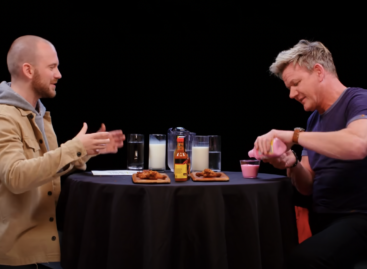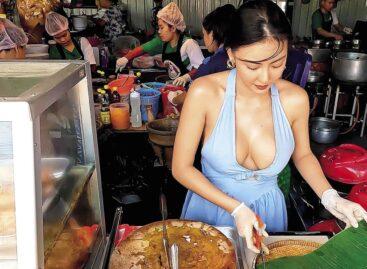Learned cooking from René Redzepi
A masterclass from René Redzepi is less a cooking lesson than an initiation into a new religion. Sure, there are ingredients with which to become acquainted, flavour combinations to think about, techniques to master. But there's other stuff to understand as well: a way of thinking about food, a way of being. “People need to realise that food is too cheap,” Redzepi says at one point, as he roars about the kitchen of his airy Copenhagen apartment, arranging platters of greens and ceramic bowls of soft fruit. “The faster you want to be at cooking the more you're going to have to learn to cook,” he says, or “Everything is good with butter. If an ingredient is not good with butter it is not a good ingredient.” Solemnly I note down his thoughts as if they are the new catechism. Perhaps they are.
In the seven years since Redzepi opened his restaurant Noma on a canal front in the heart of the Danish capital, it has come to be regarded as not simply an interesting luxury restaurant but as a key voice in the conversation about how we feed ourselves in the 21st century. Redzepi's steely-eyed commitment to a Nordic agenda, in which nothing will appear on his menu unless it is from the region in which he is located, has made words like “local” and “seasonal” sound like mere platitudes. He really bloody means it.
Last year when Noma knocked El Bulli off the top spot in the annual list of the world's 50 best restaurants – an accolade it retained this year – a torch had been passed. The modernism of Ferran Adrià felt old hat; now it was all about the best ingredients, treated as sympathetically as possible. If an ingredient-led approach really is a new religion then the half-Danish half-Macedonian Muslim Redzepi must be its high priest.
And now here I am, in church, preparing to worship. It's a laidback place. Piano jazz plays on the sound system. Redzepi's second child, Genta, was born three months ago and she's here too, for a while lodged on the hip of his wife Nadine; at one point passed into my care while mum makes coffee. Redzepi's number two chef, a quiet, big-browed Yorkshireman called Sam Miller, is also here. “I have five Brits in my kitchen,” Redzepi says. “I like the way they think and work.”
In just a few days, Redzepi will host some of the biggest figures in the culinary firmament at the MAD FoodCamp, two days of gastro-seminars in a circus tent pitched in a central Copenhagen park. (The name is a tautology; mad is the Danish for food). Redzepi, who came up with the idea, has been working on it for two years. “I saw it as a responsibility to do this,” he says. “We have a chance to educate, and for chefs to realise that the choices they make really can benefit people.” And yet for all these mission statements, there is something relaxed about the man, almost impish, as if cookery is for him an adventure.
That's how it feels as we confront the central station in his kitchen, loaded with ingredients. Today he will teach me to make three dishes. All of them use foods freely available in Britain. “In terms of plant life Britain and Denmark are pretty much the same,” Sam Miller tells me, as he arranges ingredients. None of what we're doing today, Redzepi says, is designed for the menu at Noma. “These dishes are not refined enough. This is home cooking, but it is home cooking in the style of Noma.”
And so we get to work with a fistful of daffodil-yellow unsalted butter, churned from the milk of cows fed on biodynamic pastures. Redzepi loves the biodynamic movement, the way crops are grown on the lunar cycle. He loves it almost as much as he loves the butter. I melt a dollop of it in the bottom of a cast iron pan and then add a whole cauliflower from which I have sliced off the bottom. “Boiled cauliflower is terrible. But this pot roast cauliflower is something special.” Branches of pine, spruce and juniper are then placed around it for aromatics. We put the lid on. And now? “Now,” he says, quoting an American chef friend, “it's 35 minutes of don't fucking worry about it.”
While the cauliflower is cooking, we start the second dish, by laying skin-on baby beets on a piece of foil which will form a pouch. “I love the earthiness of beets, the sweetness, the lightness. And this is so simple anybody could do it.” I am instructed to layer the beets with sprigs of fresh herbs, plucked from planted pots arrayed before me: various thymes and sage, rosemary, “whatever the hell you like”. Redzepi the chef may be doctrinaire but Redzepi the teacher is very laidback.
Related news
Related news
First We Feast studio, which produces Hot Ones, has been sold – George Soros’ company is among the new owners
Buzzfeed has sold its First We Feast studio, which produces…
Read more >(HU) Az ételárus nehéz kenyere – A nap videója
Sorry, this entry is only available in HU.
Read more >





